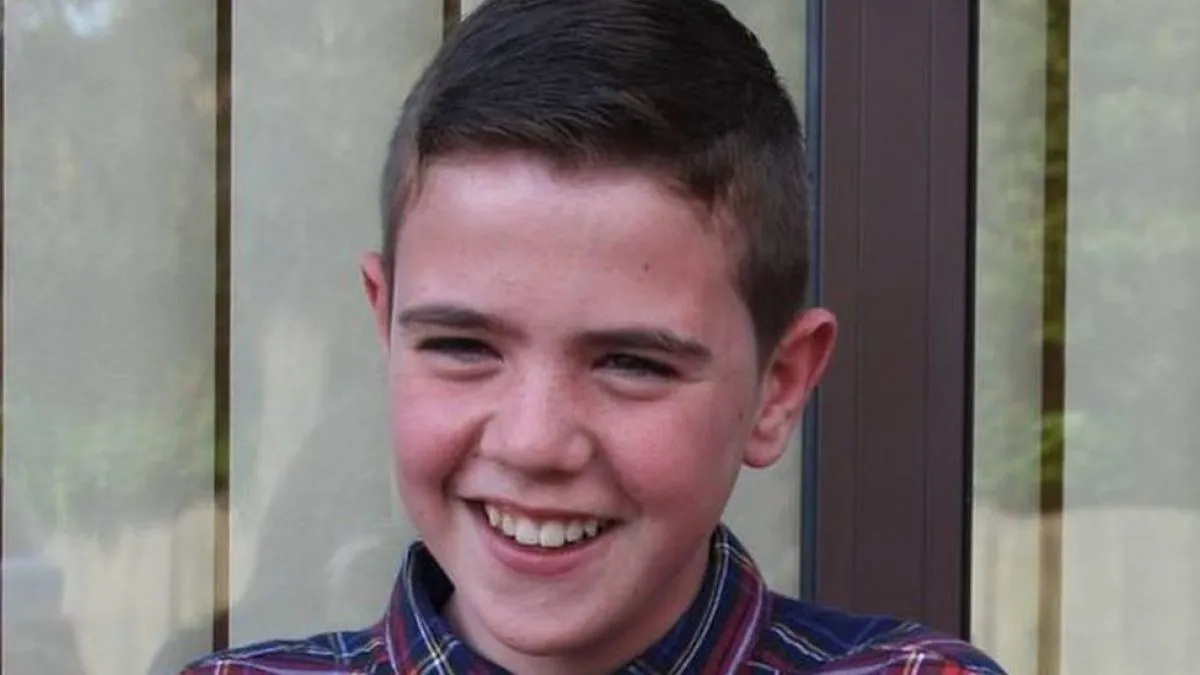My life changed in a matter of days, a British mother says in a broken voice when remembering what happened to her son in early 2015. Peter died from the irreversible complications of a blood glucose climb.But his family did not know that he had type 1 diabetes.
Peter Baldwin was 13 years old when he became very sick quickly.His family stayed in a state of shock when in six days he lost his life because of a non -diagnosed type 1 diabetes.
"I feel devastated and with a broken heart," said his mother, Beth.
"My life changed in a matter of days," he says in the broken voice, this British when he remembers what happened to his son in early 2015.
Peter had a thoracic infection for which the doctor had given him antibiotics."But he was very sick," said Beth, who watched him at home thinking that he only had an infection.
When he saw that his son was hard to breathe an ambulance.And the first thing they did when they arrived, in addition to giving him oxygen, was to prick his finger to make a blood test.
In 30 seconds, a type 1 diabetes had been diagnosed, a condition that makes the body not produce enough insulin.
The 4 key questions that could save it
Now, Beth is campaigning for all family doctors in the country to do to the families of sick children four basic questions with which they can assess whether children can have a type 1 diabetes.
1. Do you have thirst?A constant thirst that does not become drinking
2. Are you going to the bathroom a lot?More frequently than before, or start wetting the bed or filling diapers more than before
3. Are you tired?More tired than usual
4. Have you lost weight?
If some of the answers to these questions are positive, then the doctor can do a simple test that in seconds can confirm whether the child has diabetes or not, and that consists of analyzing a small sample of blood.
"The signals were there and were obvious," says the mother.
"Peter had started going to the bathroom more, he drank more and had not eaten for days because he was not good so he had lost weight and was tired, in bed."
"If you put all these indications together you have a typical case of type 1 diabetes."
Knowing this, Beth says that parents can also be attentive to these signs.
If we had known it, we would have gone to the emergency room to the hospital and their condition would have been handled in another way.
"We would have had time to prevent their organs from failing," says Beth, "24 hours make an abysmal difference."
Evolves very fast in children
The majority of children who develop diabetes have the type 1, which occurs when the pancreas is unable to produce insulin.That makes glucose cannot be removed from blood flow and transported to cells, so patients need regular insulin injections.
In young people the symptoms of type 1 diabetes develop very fast, in a matter of days or weeks, according to the NHS, the British public health system.
In adults, however, symptoms usually take longer to develop, over several months.
It is very important to diagnose diabetes as soon as possible because if the disease is not treated progressively, and high levels of glucose in the body can damage arteries, nerves and organs.
According to NHS, even a mild glucose rise that does not cause any symptoms can have harmful long -term effects.
Normally type 1 diabetes is hereditary but it is unknown what exactly is what triggers it.The probability that someone who has no close relatives with type 1 diabetes develops it is 0.5%, according to NHS.
Diabetes is not cured.The treatments areThey base the regular control of blood glucose levels and the prevention of associated disease development.







